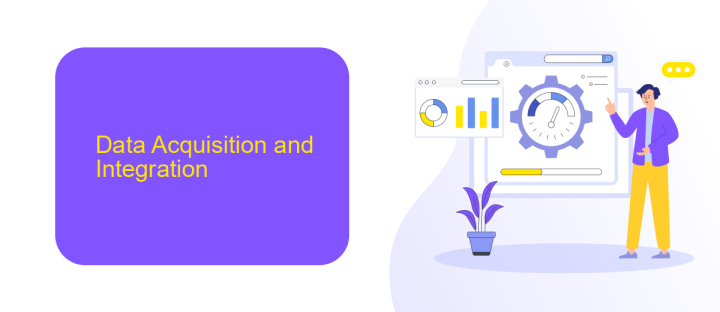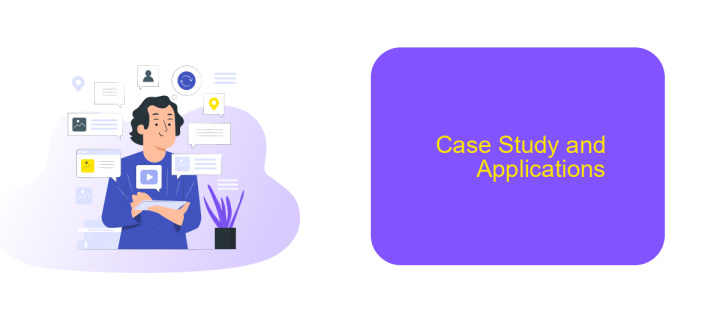Subsurface Data Integration
Subsurface data integration is a crucial process in the fields of geology, petroleum engineering, and environmental science. By combining diverse datasets such as seismic, well logs, and core samples, scientists and engineers can create comprehensive models of the subsurface. This integration enhances decision-making, optimizes resource extraction, and mitigates environmental risks, leading to more efficient and sustainable operations.
Introduction
Subsurface data integration is a critical process in the field of geosciences and petroleum engineering. It involves the seamless combination of various types of data collected from beneath the Earth's surface to create a comprehensive understanding of subsurface structures and properties. This integration enhances decision-making, reduces risks, and optimizes resource extraction.
- Improved accuracy in geological modeling
- Enhanced decision-making capabilities
- Optimized resource extraction and management
- Reduced operational risks
Modern tools and services, such as ApiX-Drive, facilitate the integration of subsurface data by automating data transfer and synchronization across different platforms. By using such services, organizations can ensure that their data is consistently up-to-date and readily accessible, enabling more efficient and effective analysis. The integration of subsurface data is not just a technical necessity but a strategic advantage in today's data-driven world.
Data Acquisition and Integration

Data acquisition in subsurface data integration involves the collection of various types of geological, geophysical, and geochemical data from multiple sources. These sources include seismic surveys, well logs, core samples, and remote sensing technologies. The data is often heterogeneous and stored in different formats, necessitating a robust system for data management and preprocessing. Advanced tools and software are employed to ensure the accuracy and consistency of the data, which is crucial for subsequent analysis and interpretation.
Integration of this diverse data is a complex task that requires seamless connectivity between various data sources and platforms. Services like ApiX-Drive facilitate this process by providing automation and integration capabilities. ApiX-Drive allows users to connect different software and databases, ensuring that data flows smoothly between them. This not only streamlines the data integration process but also enhances data accessibility and usability. By leveraging such services, organizations can achieve a more cohesive and comprehensive view of subsurface data, leading to better decision-making and optimized resource management.
Data Analysis and Interpretation

Effective data analysis and interpretation are crucial for integrating subsurface data, providing insights that drive informed decision-making. The process involves a systematic approach to ensure that data is accurately interpreted and actionable. This can be achieved by leveraging advanced tools and methodologies that facilitate comprehensive analysis.
- Data Collection: Gather subsurface data from various sources, ensuring its accuracy and completeness.
- Data Cleaning: Remove any inconsistencies or errors in the data to ensure its reliability.
- Data Integration: Utilize services like ApiX-Drive to seamlessly integrate data from multiple platforms, ensuring a unified dataset.
- Data Analysis: Apply statistical and computational techniques to analyze the integrated data, identifying patterns and trends.
- Data Interpretation: Translate analytical results into meaningful insights that can inform strategic decisions.
By following these steps, organizations can effectively manage and interpret subsurface data, leading to enhanced operational efficiency and better decision-making. Tools like ApiX-Drive play a pivotal role in streamlining the integration process, ensuring that data from disparate sources is harmonized and ready for analysis.
Case Study and Applications

Subsurface data integration has proven invaluable in various industries, particularly in oil and gas exploration. For instance, one company successfully integrated seismic data with well logs, leading to a 30% increase in drilling efficiency. This integration allowed geologists to make more accurate predictions about subsurface formations, significantly reducing the risk of drilling non-productive wells.
Another notable application is in groundwater management. By integrating data from different sources, such as soil moisture sensors and weather stations, water resource managers can optimize irrigation schedules. This not only conserves water but also ensures crops receive the optimal amount of moisture.
- Increased drilling efficiency in oil and gas exploration
- Optimized irrigation schedules in agriculture
- Enhanced groundwater management
- Improved accuracy in geological predictions
Services like ApiX-Drive facilitate such integrations by providing a seamless platform to connect various data sources. This service enables users to automate data flows and ensure real-time updates, making it easier to manage and analyze subsurface data effectively. As a result, industries can make more informed decisions, ultimately leading to cost savings and increased operational efficiency.
Conclusion and Future Perspectives
The integration of subsurface data is a critical component for advancing our understanding of geological formations and improving resource management. By effectively combining various datasets, researchers and industry professionals can achieve more accurate models and predictions. The utilization of advanced tools and platforms, such as ApiX-Drive, facilitates seamless data integration, ensuring that disparate data sources can be harmonized and analyzed efficiently.
Looking ahead, the future of subsurface data integration will likely see further advancements in automation and machine learning, reducing the manual effort required for data processing. Additionally, the development of more sophisticated algorithms and the integration of real-time data will enhance predictive capabilities. Continued collaboration between technology providers and industry stakeholders will be essential to drive innovation and address emerging challenges in this field.
FAQ
What is subsurface data integration?
Why is subsurface data integration important?
What types of data are commonly integrated in subsurface data projects?
How can automation improve subsurface data integration?
What challenges are faced in subsurface data integration?
Apix-Drive will help optimize business processes, save you from a lot of routine tasks and unnecessary costs for automation, attracting additional specialists. Try setting up a free test connection with ApiX-Drive and see for yourself. Now you have to think about where to invest the freed time and money!

